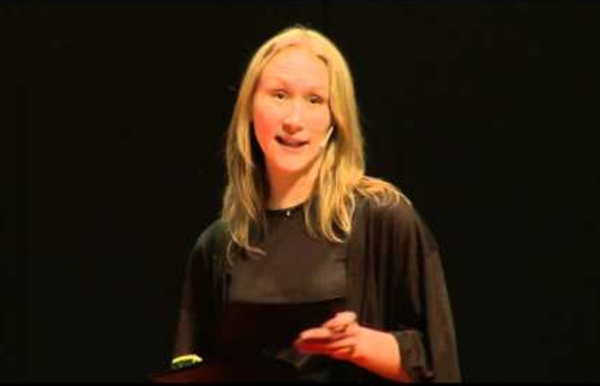



The 100 Best Young-Adult Books of All Time We’re living in a golden age of young-adult literature, when books ostensibly written for teens are equally adored by readers of every generation. In the… We’re living in a golden age of young-adult literature, when books ostensibly written for teens are equally adored by readers of every generation. In the likes of Harry Potter and Katniss Everdeen, they’ve produced characters and conceits that have become the currency of our pop-culture discourse—and inspired some of our best writers to contribute to the genre. To honor the best books for young adults and children, TIME compiled this survey in consultation with respected peers such as U.S. Children’s Poet Laureate Kenn Nesbitt, children’s-book historian Leonard Marcus, the National Center for Children’s Illustrated Literature, the Young Readers Center at the Library of Congress, the Every Child a Reader literacy foundation and 10 independent booksellers. LIST: The 100 Best Young Adult Books of All Time Little, Brown
ACT for Youth - Adolescence - Adolescent Identity Development The development of a strong and stable sense of self is widely considered to be one of the central tasks of adolescence [1]. Despite the fact that identity development occurs throughout one's lifetime, adolescence is the first time that individuals begin to think about how our identity may affect our lives [2]. During adolescence, we are much more self-conscious about our changing identities than at any other stage in our lives [3]. Visit Toolkit: Identity Development for resources. What is Identity? Identity refers to our sense of who we are as individuals and as members of social groups. Identity is dynamic and complex, and changes over time. Self-Identity and Social Identity Self-identity refers to how we define ourselves. Dimensions of Identity Many dimensions of our identity intersect to form our sense of self and cannot be separated from one another. Let's look at an example of how social context may influence one's internal sense of identity. References
10 Characteristics of the Literature The 111 articles were found across a wide variety of scientific journals (n = 80). In total, 19 of the 111 articles were theoretical in nature. Theoretical Perspectives on Identity Development Different theoretical perspectives on identity development can be found in the studies included in our literature review. Sociocultural Perspectives Researchers who employ a sociocultural perspective generally understand identity as a multidimensional phenomenon rather than a single entity (e.g., Gee 2001; Holland et al. 1998; Holland and Lave 2001): People are thought to develop a range of self-understandings, for example as a science student (a science identity), a reader (literacy identity), or a music student (a musical identity). Psychosocial Perspectives Social Psychological Perspectives Scholars adopting a social psychological perspective understand a person’s identity to consist of a social and a personal part (Tajfel 1978; Tajfel and Turner 1986). Peer Norms
Lesson Plan: Identity: Defining Self, Choosing Friends | Only the Young | POV | PBS Download the Lesson Plan Jump to: In this lesson, students explore the factors that influence self-identity, which frequently evolves as adolescents negotiate life's circumstances to find and secure their places in the world. The video clips provided with this lesson are from Only the Young, a film that follows three unconventional Christian teenagers coming of age in a small Southern California town. POV offers a lending library of DVDs that you can borrow anytime during the school year--FOR FREE! By the end of this lesson, students will: Describe the factors that shape and shift self-identityBecome aware of how self-identity influences life choices, particularly in friendshipsRecognize how choices and perspectives fluctuate as priorities, experiences, decisions and other items change, especially during adolescence Language ArtsSocial StudiesCurrent Events Internet access and equipment to show the class online videoChart paper and markers 1. 2. 3. 4. 5. 6. 7. 8. 1. 2. 3. POV: Off and Running
Elevating Student Voice Through Senior Talks Given the amount of time we’re spending teaching online—and thinking about the upcoming school year—any small steps we can take to make our virtual classrooms more relational, engaging, and supportive are important. While teachers and students benefit from restorative practices as an alternative to exclusionary discipline practices, they thrive when restorative principles are applied holistically to everything we do in schools—from how we deliver our lessons to the everyday connections we make with our students. In fact, lasting whole-school change requires that we shift from doing restorative to actually being restorative. But what does this look like and sound like in an online class? Covid-19 has brought with it a greater need for this restorative and trauma-informed approach.
Identity and Choices The last two lessons of this unit demonstrated how outside factors such as names, labels, and assumptions can influence identity. One goal of this lesson is to help students become more self-aware and realize that they have the opportunity to make choices about who they are. Sometimes the choices a person makes, consciously or unconsciously, can affect how others perceive that person. Students will consider how choices—like deciding what to wear in the morning, how to style themselves, or how to present themselves on social media—can emphasize some aspects of their identities while minimizing or hiding others. Sometimes others react to us based on choices we make, and the reactions of others can affect our future choices. Another goal of this lesson is to prompt students to explore the idea of choosing to follow personal interests, for it is often through pursuits we feel passionate about that we are able to break free from the identity feedback loop described above.